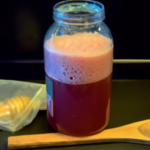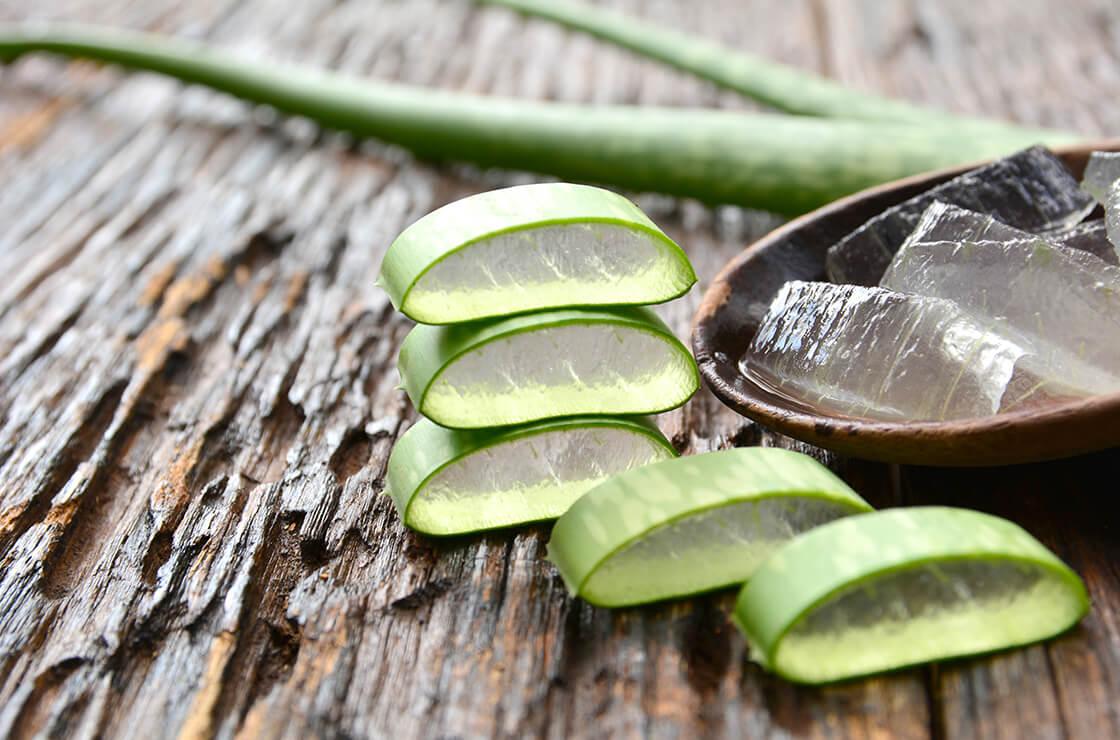To start fermenting at home safely, focus on cleanliness by using sterile utensils and containers. Use a reputable starter culture or rely on natural microbes in ingredients, and monitor your ferment for unusual smells, colors, or mold. Keep everything tidy and control temperature carefully to promote good bacteria. Record details like times and ingredients to improve your process. Want to learn how to master fermentation safely and confidently? Keep exploring for more tips and techniques.
Key Takeaways
- Start with clean utensils, containers, and hands to ensure safe fermentation and prevent contamination.
- Use reputable starter cultures to promote safe, controlled fermentation and outcompete harmful microbes.
- Follow precise instructions on quantities, temperatures, and timing to maintain optimal conditions for beneficial microbes.
- Monitor your ferment regularly for off smells, mold, or unusual colors, and discard any signs of spoilage.
- Keep detailed records of ingredients, timings, and conditions to troubleshoot issues and improve future batches.

Fermentation is a simple, natural process that transforms everyday ingredients into flavorful, nutritious foods and beverages. When you’re starting out, it’s essential to prioritize fermentation safety to ensure your creations are both delicious and safe to eat. One of the most important aspects of safe fermentation is understanding how to prevent contamination. Bacteria, molds, or yeasts that aren’t beneficial can sometimes invade your ferment, making it unsafe. To minimize risks, always use clean utensils, containers, and hands when handling your ingredients. Additionally, keep your workspace tidy and avoid introducing any foreign objects that could harbor unwanted microbes.
Using starter cultures is a highly effective way to promote safe fermentation. These are specific strains of beneficial bacteria or yeasts that help kick-start the fermentation process and outcompete harmful microbes. Starter cultures give you more control over the fermentation and increase the likelihood of a successful, safe outcome. For beginners, purchasing ready-made starter cultures from reputable suppliers can simplify the process. They come with clear instructions on how to activate and incorporate them into your ingredients. Alternatively, some traditional ferments, like yogurt or sourdough, rely on naturally occurring bacteria present in the environment or ingredients; however, these methods require more experience and attention to detail to guarantee safety.
When working with starter cultures, always follow the recommended quantities and procedures. Proper temperature control is critical—most beneficial microbes thrive within specific temperature ranges, so maintaining consistent conditions helps ensure a healthy fermentation. If you notice any off smells, unusual colors, or mold growth, it’s best to discard the batch. Trust your senses; they’re your best tools in fermentation safety. Remember that not all molds or bacteria are visible, so if anything looks or smells off, don’t take the risk. temperature control plays a crucial role in ensuring beneficial microbes thrive while suppressing harmful ones.
Label your ferments clearly and keep track of fermentation times, temperatures, and ingredients used. This record-keeping can help you troubleshoot if something goes wrong and guide your future experiments. As you gain confidence, you can experiment with different starter cultures and ingredients, but always prioritize cleanliness and safety. With patience and attention to detail, you’ll develop a good intuition for safe fermentation, turning simple ingredients into vibrant, healthy foods and drinks right in your own kitchen.
Frequently Asked Questions
What Are Common Fermentation Mistakes to Avoid?
You should avoid common fermentation mistakes like using improper temperature, which can hinder fermentation or cause spoilage. Always maintain a proper temperature to guarantee ideal growth of beneficial bacteria. Additionally, contamination prevention is vital; keep your work area and utensils clean, and use proper sealing techniques. Rushing or opening the container too often can also disrupt the process. By paying attention to temperature and cleanliness, you’ll achieve successful, safe ferments every time.
How Long Does Homemade Fermentation Typically Last?
Fermentation favors a flexible timeline, typically lasting from a few days to several weeks depending on the type. You should track the fermentation timeline carefully, tasting along the way. Once it reaches your preferred flavor, store it properly to prolong the storage duration. Generally, fermented foods can stay good for weeks to months when refrigerated, but always check for signs of spoilage before enjoying.
Can I Ferment Without Special Equipment?
Yes, you can ferment without special equipment by using common household items like glass jars, cloth covers, and rubber bands. Just guarantee fermentation safety by keeping everything clean and monitoring for mold or bad odors. Equipment alternatives, such as plastic lids or breathable cloths, work well if sterilized properly. Focus on maintaining proper temperature and avoiding contamination to ensure successful fermentation without specialized gear.
What Are Signs of Spoilage in Fermented Foods?
Think of your fermented food as a delicate symphony; when spoilage creeps in, dissonant notes appear. You’ll notice signs of mold—fuzzy, colorful patches—and unusual odors that resemble rotten or sour scents. These are clear indicators that fermentation has gone awry. Trust your senses; if something looks or smells off, it’s best to discard the batch to keep your fermentation safe and flavorful.
Are There Health Risks Associated With Home Fermentation?
Yes, there are health risks if you don’t follow fermentation safety guidelines. Improper fermentation can lead to harmful bacteria growth, causing foodborne illnesses. However, when you maintain proper hygiene, monitor pH levels, and use trusted recipes, you can enjoy the health benefits of fermented foods safely. Staying vigilant about signs of spoilage and understanding fermentation safety guarantees you maximize the health benefits while minimizing risks.
Conclusion
As you start your fermentation journey, it’s amazing how a simple jar can transform everyday ingredients into something nourishing and alive. You might find, just like many before you, that patience and curiosity turn into delightful surprises. Sometimes, the tiniest ferment can become a cherished tradition, connecting you to ancient practices. So, keep experimenting—because in those little moments of discovery, you realize how beautifully unexpected the world of fermentation truly is.
Ilana has been a vegan for over 10 years. She originally made the switch for health reasons, but soon found herself becoming more and more passionate about the ethical and environmental implications of a vegan lifestyle. Ilana is the author of The Graceful Kitchen, a blog all about veganism. She loves to cook up delicious and nutritious vegan meals, and share her recipes with others who are interested in leading a cruelty-free life. Ilana is also a strong advocate for using whole foods as the foundation of a healthy diet, and believes that going vegan is one of the best ways to achieve this.















